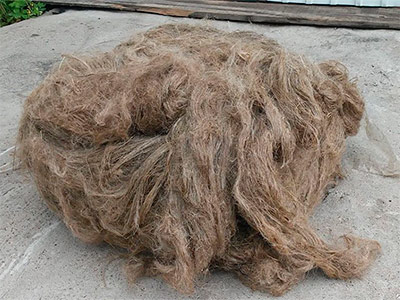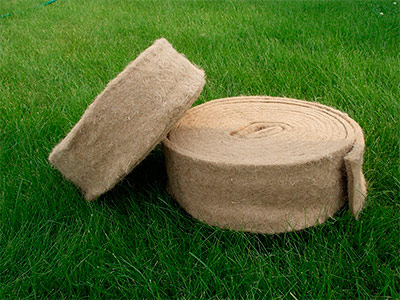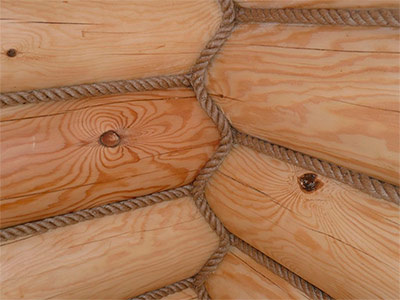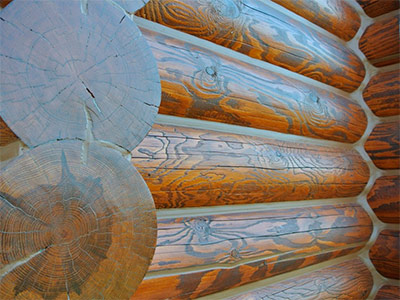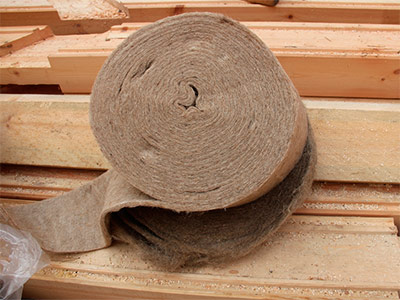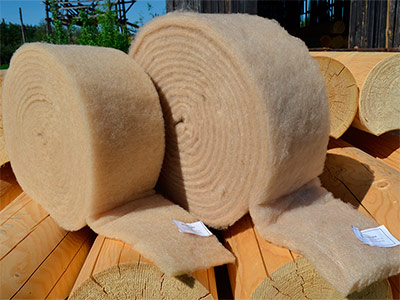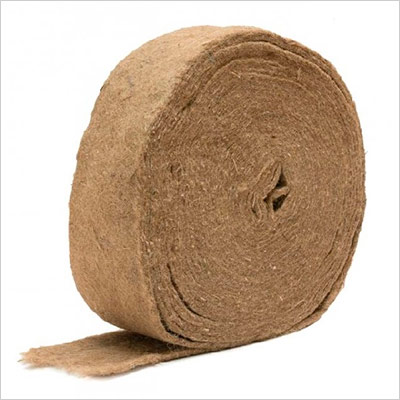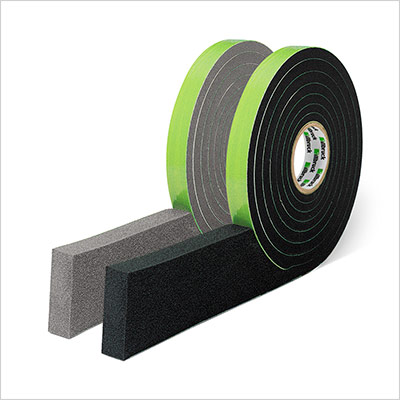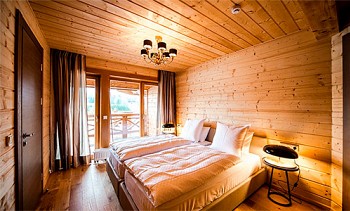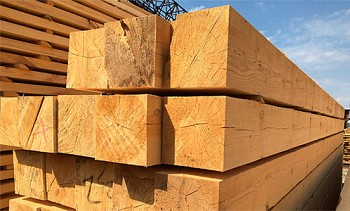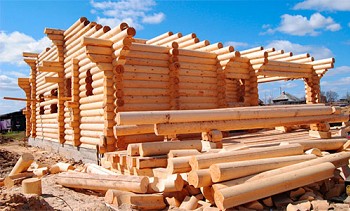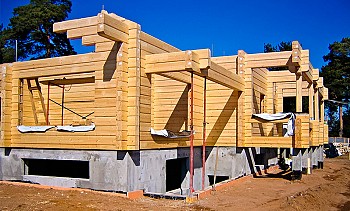How to choose an interventional insulation for a house from a bar or log
During the construction of a wooden house, at a certain moment, it becomes necessary to choose an interventional insulation. In this article, we will figure out which interventional insulation to choose for a beam or log, which materials are suitable for this, and which should not be used.
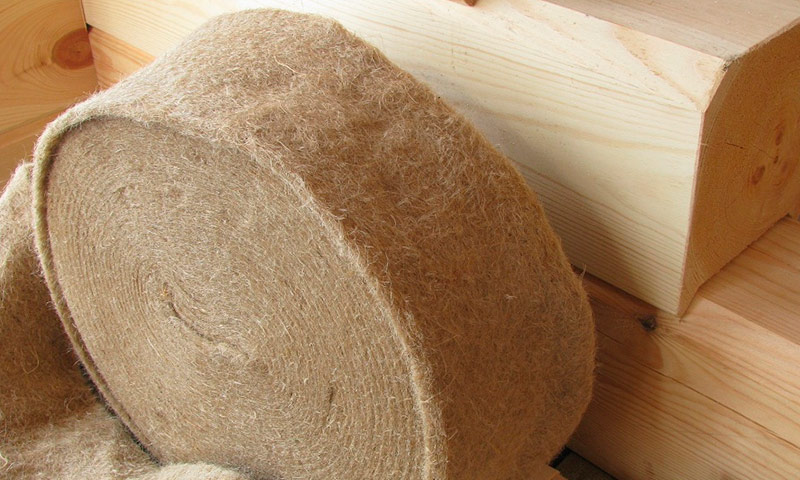
Content:
What are the requirements for interventional heaters
The main task, for the solution of which a seal is necessary between the corners of the log house, is to eliminate heat loss through the cracks. In addition, the features of a chopped house should be taken into account, especially the mobility of the crowns. Even after shrinkage, they do not remain completely static due to the fact that the wood tends to “play” with changes in humidity. From this, the gaps change a little.
To meet these conditions, a heater needs the following set of qualities:
1. Adequate density. Loose material will not be able to prevent the flow of air through it.
2. Low thermal conductivity. High resistance to heat transfer of the material is achieved at a certain density, at which the air in it occupies a sufficiently large volume, but the occurrence of a noticeable flow is impossible. The thermal conductivity of the insulation must be at such a level that cold bridges do not form in the cold season.
3. Elasticity. Elasticity is necessary to compensate for seasonal variations in the size of the timber or log. The material should easily compress and regain its volume, avoiding the appearance of gaps.
4. Interaction with water. The sealant is at a temperature and humidity difference, which creates conditions for the appearance of condensate. A good interventional insulation should give moisture to the atmosphere, and not accumulate it inside. It should have good vapor permeability and not interfere with the flow of this process in wood.
5. Durability and resistance to decay. The insulation must not lose its useful qualities throughout the entire service life.
6. Environmental friendliness. The insulation must be environmentally friendly material. It should not emit volatile substances and cause allergic reactions.
Types and forms of sealants for interventional seams
We define the classification of heaters for timber according to several parameters.
Interventional heaters in the form of:
Interventional heaters by type of source material:
Interventional heaters in structure:
Each of the species has a set of advantages and disadvantages that must be considered when choosing a material. Let's review starting with traditional materials.
What heaters are best suited for the insulation of logs
Based on the above requirements, we can conclude that the best materials for interventional insulation of logs or beams are gaskets made of natural materials.
Linen Seals
There are two types of flax insulation suitable for interventional warming - this is linen tow and felt.
Tow is coarse fiber waste from the primary treatment of bast plants. Due to the uniformity of the fibers, it is easy to level and rid of knots. But most often tow is used for finally caulking of interventional joints. As the main material using linen felt.
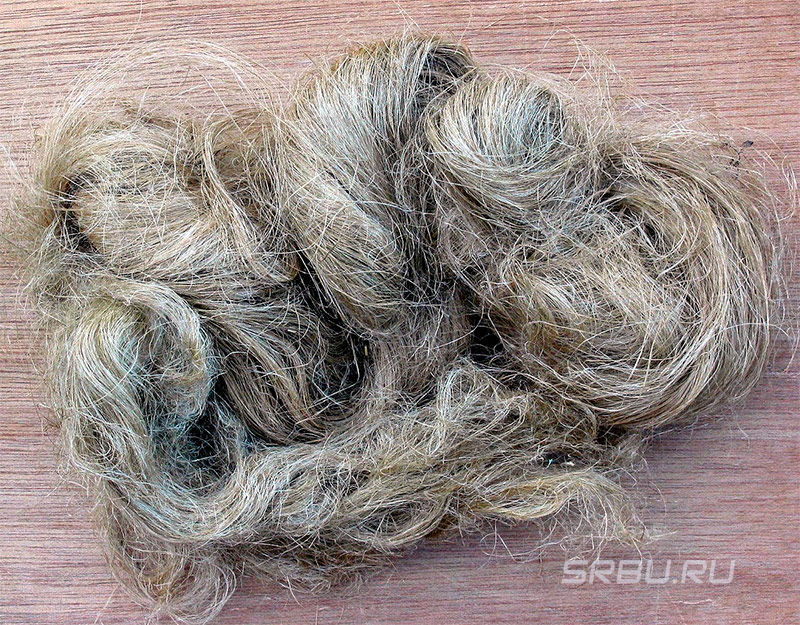
Linen tow.
Linen felt is a non-woven material based on linen fiber. Other names are eurolene, flax. In fact, felt and linen are different materials.Felt is made using needle-punched technology, its threads are randomly woven along the layer thickness with special needles. Batting is fastened with through-piercing canvas with cotton or synthetic thread. For intervening compaction, needle-punched material is usually used.
Linen felt is used in the form of ribbons 5–20 mm thick and up to 150 mm wide. The thickness and width of the tape is selected depending on the width and profile of the beam.
Linen felt has a density of about 700 g / m2, the composition of the fiber includes: 80% cellulose, 5% lignin, 3% pectin and wax. Due to the presence of lignin, it is able to breathe and give excess moisture to the outside. A flax sealant does not accumulate a large amount of moisture even with prolonged exposure to humid air.
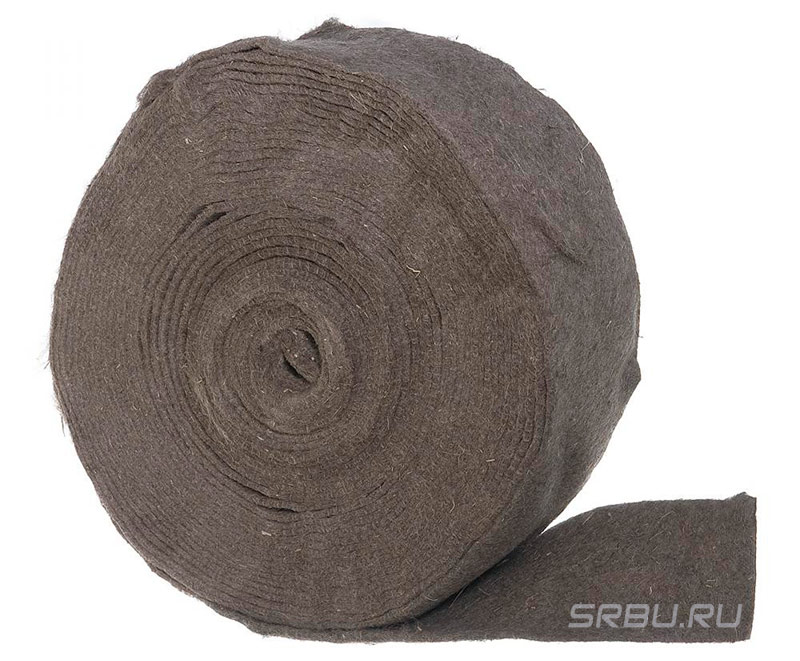
Linen felt.
Jute seals
Jute felt tape is similar to linen, and it is applied in the same way. Jute is more resistant to rot, they are less interested in birds. But it is tougher than flax, it wrinkles worse, which must be taken into account when working. Jute fibers contain: 70% cellulose, 13% lignin, 0.2% pectin and 0.4% wax. Of the negative characteristics, it should be noted that jute has greater fragility and higher hygroscopicity. In addition, due to its foreign origin, this material is more expensive.
To improve the properties of the tape, 30 to 50% of flax fiber is added to the jute. In this way, a jute-flax stitch is obtained. In this case, the insulation combines the advantages of both materials.
To improve the quality and durability of non-woven tape heaters, lignin is added to them during production and antiseptic and fire retardant treatment is carried out. Lignin is a natural polymer derived from wood. It serves as an adhesive for bonding fibers. Antiseptic and flame retardant treatment compensates for the natural deficiencies of natural fibers.
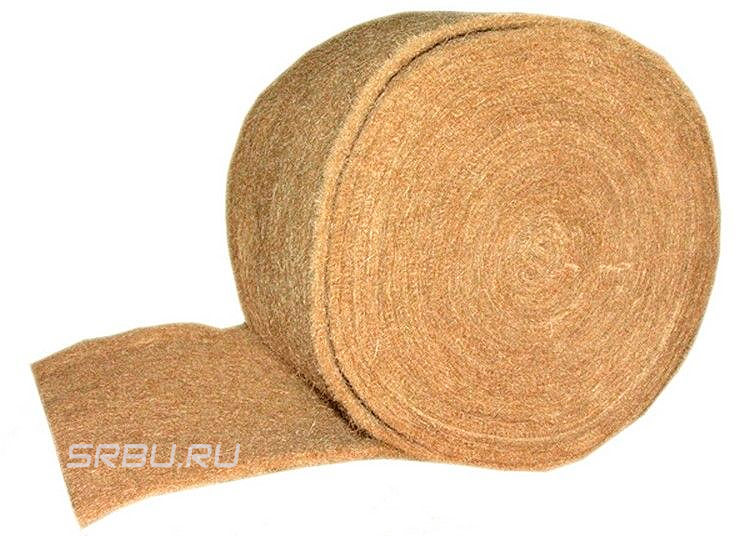
Jute felt.
Seals in the form of a twisted cord from jute fiber are used to seal joints from the inside after construction. With their help, the joints are given a finished look, masked wood defects, which are especially visible at the edges of the crowns. Caulking with a cord performs mainly an aesthetic function. For a timber frame, it is not used due to narrow joints.
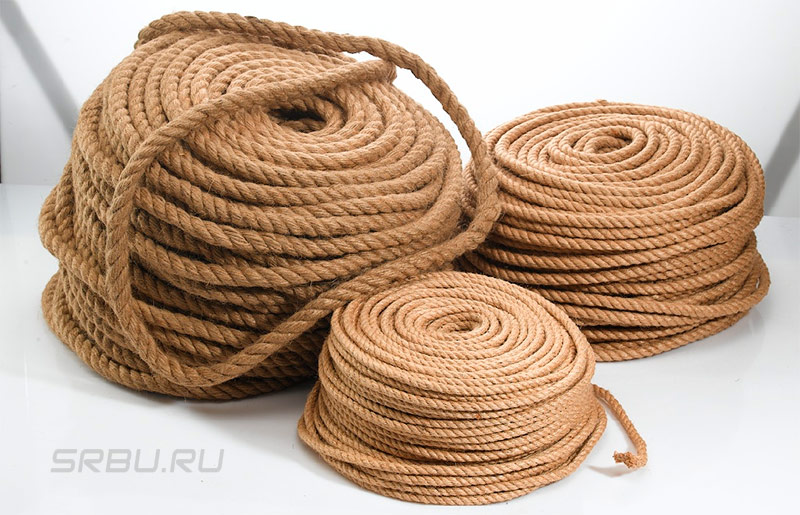
Jute cord for decorating interventional joints.
Moss
This is the oldest material used for sealing joints. Thin strands of moss create a dense, air-saturated mass with low thermal conductivity. Moss is valued for its ability to absorb and give away moisture. In addition, it has antiseptic properties and is not susceptible to decay.
At present, this material is not used because there are a number of gaskets superior in their characteristics to moss. Moreover, the process of collecting and harvesting moss is very laborious. It is very difficult to distribute it evenly, and when completely dried, the moss becomes brittle, so it can only be used in a dried form. Previously, moss was really widely used to seal joints, but this happened only because there were no other materials.
Other materials used as interventional heaters
There are a number of materials intended for interventional warming, regarding which there are constant disputes regarding the suitability of their use for these purposes. Mostly these are synthetic materials of various kinds. Compared to natural materials, they have both advantages and disadvantages.
Synthetic fiber seals
For interventional warming, synthetic felt can be used, which is made from polyester fibers (polyester).
Its main advantages:
- insensitivity to moisture;
- one hundred percent biostability;
- elasticity, eliminating the appearance of cracks during operation.
If we leave aside the issue of environmental friendliness of polyester, there remains one drawback - low hygroscopicity. The likelihood of condensation in it is higher than in natural materials.Before using it, you need to accurately assess the temperature and humidity conditions of the room and the climate. You may need vapor barrier joints from the inside of the house.
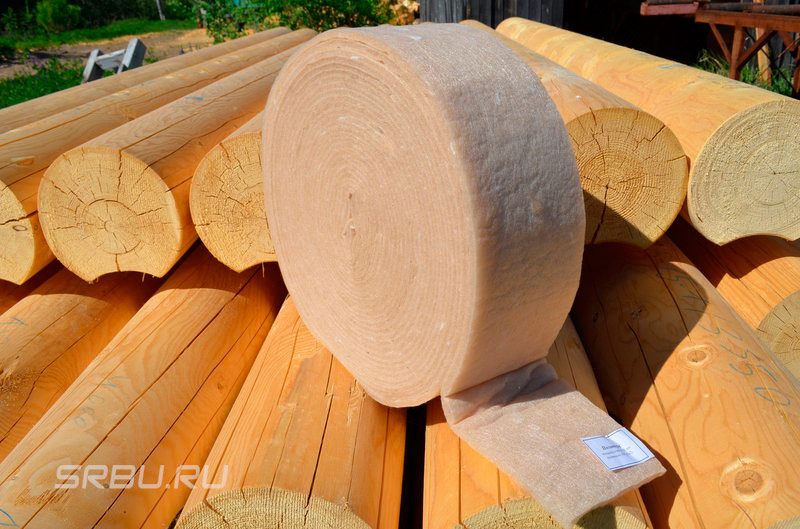
Synthetic fiber sealant.
Pre-Compressed Tape (PSUL)
This material was designed to seal installation joints during window installation, and has interesting properties.
- Thermal conductivity is higher than that of fibrous insulation by 50%.
- The vapor permeability is lower than that of felt by 15%.
- Does not absorb water: water absorption - 4% (measured after 12 hours exposure under water).
- Water resistance: the tape does not pass water under pressure from 200 to 600 Pa, depending on the brand and manufacturer.
- At 20aboutAfter installation, it expands by 5 times within 15-30 minutes, filling all the irregularities.
- With fluctuations in the thickness of the seam, it changes its volume without leaving cracks.
- Easy to install thanks to the adhesive layer.
- Service life - at least 20 years.
Given at the top of the list, a comparison with fibrous materials is conditional, since the real parameters of both felt and PSUL depend on the degree of compression.
A pre-compressed sealing tape can be used both as the main insulation and as an additional insulation on the outside of the joint. An external seal reliably protects the joint from water, but does not prevent water vapor from escaping out. The tape during operation does not require updating and additional caulking joints.
Despite its advantages, foamed tapes are rarely mentioned in the list of materials for the construction of a timber house. Apparently, their use does not correspond to the philosophy of wooden construction.
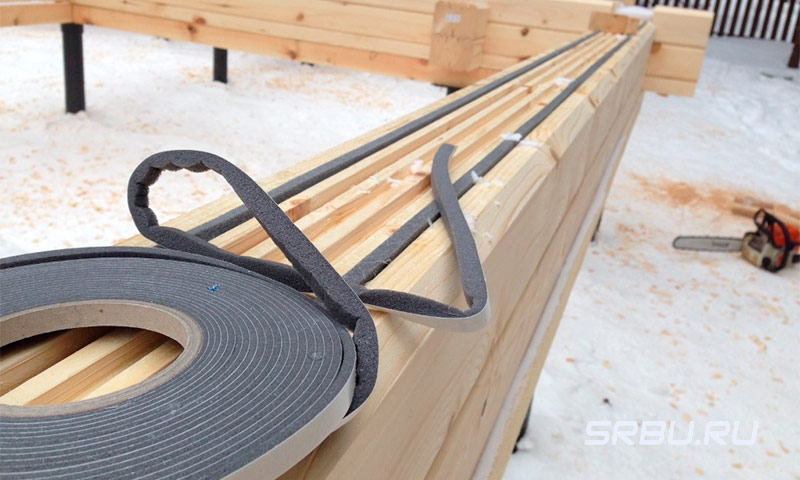
PSUL.
Sheep wool felt
This material is superior in its heat-insulating qualities to heaters from plant fibers. It is easily crumpled and, after removing the load, restores its shape. It has high vapor permeability, is able to accumulate and easily give moisture. Doesn't shrink over time.
The biological resistance of wool insulation is provided by antiseptics. Of the shortcomings, it is worth noting the high cost and allergenicity.
Sealants
This class includes special pastes that fill the joint and harden in it, creating an insulating layer. For log cabins use special sealants with sufficient elasticity. As a rule, sealants are used internally. They not only seal the cracks, but also form joints. Most of them are easily painted, and some already have a certain shade that can be matched to the interior.
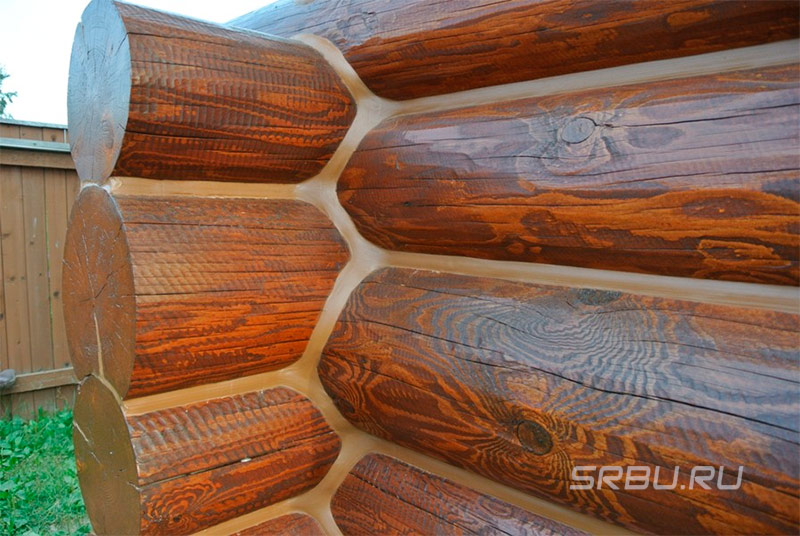
Sealing joints with sealant.
When using synthetic materials and sealants, it is best to consult a specialist. Bad selection or the wrong combination can ruin the house in a few years.
What heaters can not be used as an interventional seal
For interventional warming, you can not use glass or stone wool and any materials based on these fibers, as well as polyurethane foam - neither in the form of a finished tape or cord, nor in the form of sealant.
Mineral wool easily condenses moisture on its fibers. As a result, it sags, and the joint can be blown. In addition, regular moistening of the joint will lead to rotting of the wood in a place inaccessible to processing.
Polyurethane foam does not have sufficient elasticity. With prolonged compression, irreversible deformation occurs, and when the joint expands, a through gap is formed in it. Polyurethane foam sealant is even less elastic, and when filling the joints there is a risk that the expanding foam will raise the crowns and disrupt the correct operation of the log locks.
When choosing an interventional insulation, it is necessary to accurately take into account all the features of construction, starting with the purpose of the house and ending with the quality of the main material.Consultation with specialists in this field should not be neglected.

